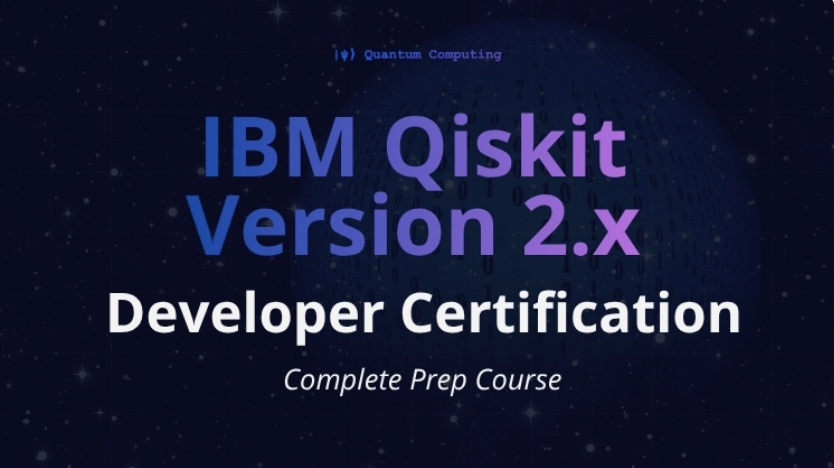
By: Rob Hays, CEO, Atom Computing
Quantum computing gained a lot of attention and headlines in 2021 with companies, like ours, making big bets on this paradigm-shifting technology. While quantum computing may not be a household term just yet, we are going to see big advancements in 2022 on technology development and breadth of involvement. As I’m out talking to customers and partners, I see quantum computing continuing to grow mindshare every day.
Here are my top six quantum computing predictions for 2022:

1. Newer quantum computing modalities will achieve eye-opening breakthroughs
Early adopters are building teams and investing in proof-of-concept use-cases, learning how to take advantage of quantum computing to gain a competitive edge in the market. These customers are eager to try different quantum computing platforms to see what works best for their applications. Over the past couple of years, increased R&D in newer quantum computing modalities has delivered competitive systems that show the potential to scale at a faster pace than the earlier modalities.
In 2022, we are going to see an acceleration of technical demonstrations and product readiness in neutral atom technology – building further interest and credibility in the approach. By the end of the year, I predict that neutral atom-based quantum computing will be on equal footing in terms of customer awareness compared to the earlier technologies – superconductors and trapped ions. We may also see demonstrations of photonics and other new technologies not yet on most peoples’ radar screens.
2. Increased attention in NISQ use-cases at various scales
Hardware providers are pushing to scale the number of qubits per system while potential users work with partners to experiment on these initial, smaller systems. Today’s quantum computers only have dozens or, in some cases, a hundred or so qubits – which isn’t a sufficient scale to compute meaningful commercial problems. Today’s systems are prone to error and do not have enough physical qubits to perform error-correction algorithms to overcome the errors. Thus, we have NISQ machines in search of use-cases.
I predict we will see novel ways of using NISQ machines for a modest set of interesting use-cases in financial services, aerospace, logistics, and perhaps pharma or chemistry. This year, I believe that applications developers will figure out how to gain more commercial value out of NISQ systems with thousands of qubits, but the hardware won’t quite get there in 2022. Additionally, I expect to see demonstrations of mid-circuit measurement and error correction on a number of modalities this year pointing toward the end of the NISQ era and a more productive quantum computing era on the horizon.
3. Leading US and Chinese Cloud Service Providers will double down on quantum computing
Cloud Service Providers (CSPs) should benefit greatly from quantum computing given their breadth of pervasive services, the deep integration of artificial intelligence (AI) into their workloads, and the opportunity to vastly improve AI prediction models based on the highly-parallel, statistical nature of quantum computing. They also control their own infrastructure, applications, and customer interfaces, and have deep technical expertise in semiconductors, system design, and software development. Building their own vertically-integrated solution stack saves cost by eliminating vendor margin stacking and provides better services through hardware and software co-optimizations. All of this gives the CSPs a unique ability and the motivation to own proprietary quantum computing hardware and software technologies.
I believe the CSPs can profit from quantum computing faster and at a much larger magnitude than nearly all other sectors, at least initially. This year, I expect to see them double down to ensure they have viable technology options that can meet their “hyper-scale” needs and capture a significant share of the value chain in the future. Some will invest in multiple, competing technologies in order to diversify their risk and box out their competitors by taking viable options off the table. It will come in the form of organic R&D, acquisitions, and partnerships. All of the above in many cases. The amount of money invested will seem crazy to some but, from the point-of-view of the leading US and Chinese cloud service providers, the investment will pale in comparison to the long-term value to be gained from a leading quantum computing solution.
4. Investments in Quantum will continue to break records
2021 saw 2X growth year-over-year in venture capital investment in Quantum Computing start-ups surpassing $1.7B, according to McKinsey. We also saw the first pure-play quantum computing hardware company go IPO and the first large vertical merger. On top of this, governments and multinational corporations have invested billions of dollars collectively. Some have said it’s too much. We’ve even heard talk of a quantum bubble and a quantum winter.
While the size and growth rate of investment is large, the expected size of the quantum computing market is much larger. We are at a point where quantum computing is turning a corner from scientific research and proofs-of-concept to hardware and software engineers building products with commercial promise in the next few years. More investment is required to deliver large-scale quantum computing that benefits a broad set of industry verticals and use-cases. I expect the amount of money invested in quantum computing to continue rising in 2022+ with more companies entering the race. At least two companies have signaled intent to IPO soon. I wouldn’t be surprised to see at least 5 major acquisitions or IPO announcements before the end of the year.
5. Diversity and inclusion will be a bigger focus in Quantum Information Science (QIS)
The research is clear. Teams who build and celebrate racial, gender, and cultural diversity benefit from a broader range of experiences and ideas which leads to better products and increased profitability. Like the broader tech industry as a whole, the QIS workforce does not currently represent the diverse population of our society. This is not a new issue, but it’s an important one that we need to address. Now is the best time to shape a more diverse workforce while the industry is young before the unconscious biases of “good ‘ole boys” networks have a chance to form. We need to continue to encourage students to enter into STEM programs with a particular focus on sponsoring underrepresented minorities and women in quantum physics and engineering programs to train them for future jobs in QIS.
While there is strong competition for scarce talent among the industry players, I think we will see more cooperation in attracting talent to the ecosystem and career development support for women and minorities. As the technology matures and investments in commercialization increase, we are starting to see a much broader set of job roles available and required to grow the market. As a result, the available talent pool in 2022 is going to expand far beyond the physics labs of our universities. With additional job roles, an expanded talent pool, and the exciting opportunity in quantum computing, there is no excuse for not being able to attract a more diverse workforce who can help shape the future of the industry and benefit from the value created. It’s a long game, but we can move the needle this year.
6. Regional Quantum Centers of Excellence will enable tighter collaboration.
It feels like there is a quantum computing startup or research lab popping up in every corner of the planet. That’s a good thing. Many of these companies and institutions are doing important R&D and carving out unique parts of the solution stack to make quantum computing a reality. It takes a village to build an integrated system of complex hardware, software, and services that interoperate together to deliver a superior user experience.
In 2022, constellations of collaborators, organized by national and regional interests will emerge among university and government research labs and private companies in their region. Component suppliers, systems hardware companies, and software platform companies will begin working more closely together forming commercial alliances. They will share specs, IP, customers, and integrate and test their products together to deliver turn-key solutions (well at least solutions that don’t require a physicist to operate them). These collaborative partnerships will provide environments of innovation to accelerate technology and market development in their regions in an effort to gain an advantage over other regions in the quantum computing race.
2022 is going to be an exciting year on the journey toward scalable quantum computing. We have a lot of work to do. If you are interested in connecting or talking more about these predictions, you can reach me via LinkedIn. Here’s to an innovative quantum New Year!
Thanks!
Rob Hays
If you found this article to be informative, you can explore more current quantum news here, exclusives, interviews, and podcasts.

















